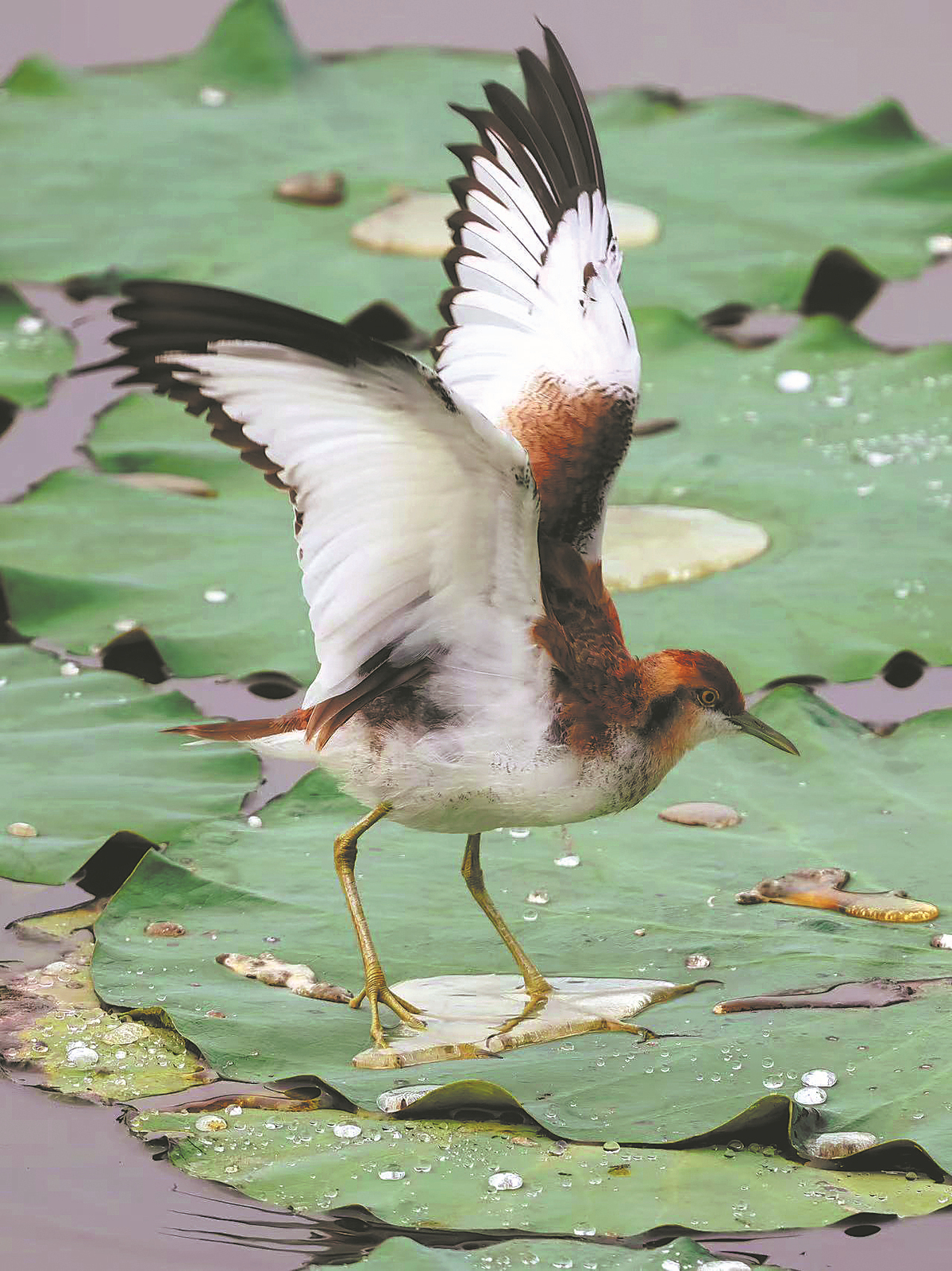Wetlands buzz with birds and enthusiasts


With spring in the air, migratory birds flock to China's nature reserves located across their roots to frolic during the day and roost at night. Drawn by the majesty of these wonderful creatures, bird-watchers gather, binoculars in one hand and cameras in the other to snap the best that nature has to offer.
Local governments located along this migratory route, and who've presided over the improvement of many of these nature reserves and wetland ecosystems and noted the growing trend of birding, have decided to get in on the action and launched a social media campaign to promote their spots of natural beauty.
When visiting a wetland, among the common sights of migratory birds is another common sight — keen bird-watchers and their ever-growing telephoto lenses.
Shooting birds for photography requires similar skills to those of a real sniper, with fast action and quick response times needed to capture birds crisply in flight.
In Hubei province, known as the "Land of a Thousand Lakes", wetlands in Wuhan bustle at dawn as bird photographers stake out positions to document species like black-headed gulls, long-tailed shrikes and red-billed starlings.
"Arriving at East Lake at sunrise means fewer tourists and more birds. I recorded over a dozen species and even heard mating calls," said Dai Mengxin, a university student who has mastered understanding birds' "timetables" through regular park visits. She emphasized respecting birds' space to capture their natural behaviors.
In Dali, Yunnan province, the local tourism bureau is promoting routes along the Cangshan Mountains and Erhai Lake.
The tourism bureau in Chongqing, located on Asia's raptor migration corridor, is inviting visitors to observe birds of prey. In Jiangxi province's Poyang Lake, eight birdwatching tourism routes have been launched, attracting over 2 million visits and generating 500 million yuan ($69 million) in revenue.
In the Xinjiang Uygur autonomous region, birding tour guide Zhang Qiang noted surging demand. "Tour groups are booked through July," he said.
His itineraries to the Kelan River Valley in Altay and Ulungur Lake in Fuhai target species like willow ptarmigans and little ringed plovers. With a decade of experience, Zhang has witnessed firsthand the growing bird populations and the heightened public interest.
"Skeptics who once asked 'What's interesting about birds?' now share photos online as equipment enthusiasts," said Qin Zhiming, a 20-year veteran who's seen novices evolve into conservation volunteers.
A survey from 2023 by China's forestry authorities and bird-watching organizations estimates 340,000 active birders nationwide — a surge of 200,000 since 2018.
"Expanding interest reflects public engagement in ecological protection," said Yan Jun, head of Wuhan Bird Watching Society. While spring's vibrant breeding plumage offers photographers "seasonal masterpieces", he stresses prioritizing avian welfare: "No disturbance, no feeding, no impact on reproduction."
Contact the writers at weiwangyu@chinadaily.com.cn





































